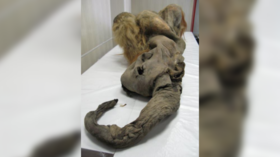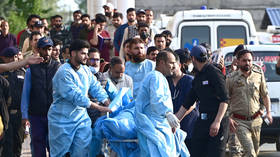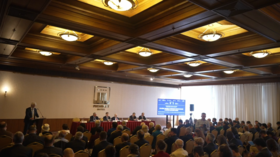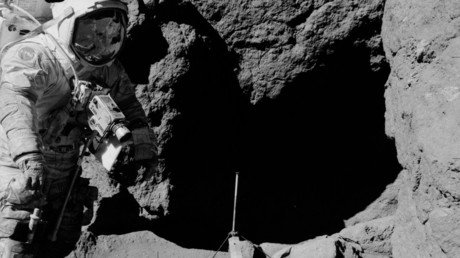Step towards Jurassic Park? Scientists ‘wake up’ cells of ancient mammoth

A team of Japanese and Russian scientists has resurrected the cells of a female baby woolly mammoth named Yuka in a major step towards possibly one day bringing the animal back from extinction.
Yuka’s mummified remains were discovered in 2010 buried in the Siberian permafrost on the Laptev Sea where she died over 28,000 years ago. DNA was extracted from cells within the mammoth’s muscles and bone marrow, and several dozen of the least damaged nuclei were implanted into mice eggs, five of which showed “signs of biological activity.”
Researchers observe biological activity after transplanting cell nuclei from Yuka the woolly mammoth (dead for 28,000 years) into mice oocytes. Whoa! Paper: https://t.co/3kVI5uiGsopic.twitter.com/D6x3TH84zq
— Steve Hurst (@hurst_sj) March 12, 2019
The cells were more damaged than initially hoped but the experiment showed significant promise.
Just don’t expect any Jurassic Parks anytime soon, as none of the implanted cells produced cell division, which would be a key process needed for any hope of cloning the giant creatures. Much like Yuka when she died, the efforts to resurrect an actual extinct animal are only in their infancy.
Also on rt.com Cloned woolly mammoths will roam Siberia again within a decade, region head predicts“This suggests that, despite the years that have passed, cell activity can still happen and parts of it can be recreated,” said Kei Miyamoto, one of the study’s authors, as quoted by the New York Post. “We need new technology, we want to try various approaches.”
“[It’s] a significant step towards bringing mammoths back from the dead,” Miyamoto concluded.
Also on rt.com ‘Oldest in the world’: Mummified ice age wolf pup & caribou calf found in Yukon (PHOTOS)The research team at Kindai University in Japan published their findings in the Journal Nature. Thankfully, they are not the only ones attempting to bring these hairy giants back to life.
George Church, a Harvard and MIT geneticist and co-founder of CRISPR, is heading up the Harvard Woolly Mammoth Revival team whose stated aim is to bring the mammoth back to life to help humanity with conservation efforts across the globe.
Like this story? Share it with a friend!















